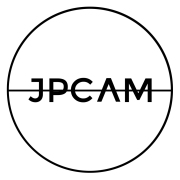▶ BCM232 GLOBAL MEDIA AND SOCIAL JUSTICE
Orientalism, what is it? The word Orient directly means the countries from the East — especially the ones from East Asia. You put -ism at the end of Oriental and you have a word that describes what the people of the West (typically those from North and South America) portray the people of the East. This goes down to stereotypes and impressions, a lot of which are usually depicting the East as traditional and undeveloped (Demerdash 2015).

Fast forward to the 21st century and… well, well, well, what do we have here? A lot of popular music in today’s day in age have used Orientalism in both music videos and in music; from the clothing and the settings to the instrumentals and the lyrics.

There has been a lot of artists that use elements of the East as a symbol of luxury and somewhat exotic instead of the typical stereotype that was portrayed in the past (Weheliye 2019). One example of Orientalism being used is in the music video by Cardi B titled Bodak Yellow, the song itself doesn’t refer to any means of Orientalism and is actually about how successful she is and has become and how despite she can be a humble person at heart but when she needs to she can show who’s the ‘boss’. The music video is set in Dubai as she quotes in an interview about the song, and you can see in the music video she’s wearing a traditional piece of clothing that most women from the Middle East wear — that is a niqab. Although, the song has nothing to do with the music video! She can be seen riding a camel out on a desert in some scenes, and later sat in front of a mansion with a cheetah as a pet. The way that Cardi B portrays the Middle East is completely different as to what it really is; almost as if it was a fantasy in the eyes of the West — it shows that the Middle East is extremely luxurious and far too overly sexualised.

Surprise, surprise — Cardi B wasn’t the only artist who glorified Eastern culture. Nicki Minaj is guilty of glorifying Eastern cultures that aren’t of her descent, she’s done so more than once but the song (as well as the music video) I’ll be talking about is her most latest hit and that is of her song Chun-Li. When I first heard of the title I instantly thought of the female video game character from Street Fighter… Chun-Li, is Nicki referring to herself as Chun-Li?

In the beginning of the music video, the title of the song is shown both in Chinese characters and in English — all while accompanied with the sound of a gong being struck. Nicki is then speaking as a voice over on top of a bunch of clips; some clips even show men in outfits that seem to be of Chinese officers — now that alone is already a clear sign of where exactly Nicki is taking us down the road. I’m not going to lie but, there isn’t much of the traditional elements of the Chinese culture being seen (like in the way that Cardi portrayed the Middle East), but you can see throughout the music video that the reason why it doesn’t seem like it really is ‘traditional’ is because the so-called ‘Chinese’ style was portrayed with a Western twist. Putting aside the very provocative outlook of the music video, Nicki is seen wearing chopsticks in her hair alongside with Chun-Li’s signature hairstyle and to top it off — Chun-Li’s iconic dress but sexualised. Oh but it doesn’t stop there, if you thought the chopsticks in her hair were already proving a point, in Nicki’s lyrics she also talks about those chopsticks. In the beginning of the second verse she raps:
I went and copped the chopsticks
Put it in my bun just to pop shit
Popular Music always tries to find ways to ‘spice up’ the industry and I never realised that Orientalism played quite a part of the ‘spicing up’. I believe that the main concept and idea of Orientalism hasn’t changed that much, instead different renditions of the idea are becoming popularised. I personally think that Eastern cultures have been glorified in a way that is portraying Eastern countries as an alternate reality and as a fantasy to the West — think of it as a fetish. The West takes elements and practices from the East and compose a glorified, fantasy-like piece of ‘art,’ with overly luxurious acts and clothing and let’s not forget the overly sexualised portrayal of some elements of the East that make the impression of them as uncivilised.

References:
- Demerdash, Nancy. “Orientalism.” Khan Academy, Khan Academy, 2015, https://www.khanacademy.org/humanities/becoming-modern/intro-becoming-modern/a/orientalism.
- KOÇ, M. A. (2019). What is the “Middle East”? : Western-centric knowledge-power perception towards the “East.” International Journal of Kurdish Studies, 5(2), 482–489. https://doi-org.ezproxy.uow.edu.au/10.21600/ijoks.572942
- Said, E. W. (2003). Orientalism / Edward W. Said. Penguin. Retrieved from https://search-ebscohost-com.ezproxy.uow.edu.au/login.aspx?direct=true&db=cat03332a&AN=uow.b1506032&site=eds-live
- Weheliye, Alexander G. “Sonic Alterity – Race, Orientalism and Popular Music.” Norient, 19 Mar. 2019, https://norient.com/stories/popular-orientalisms-2/.
